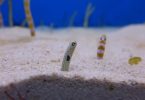Table of Contents
There is a spectacular view seeing a big school fish that moves in unison as though it is a single creature, you may ponder about who is in control, who gives the orders? How close they stay? Why they seem to be selected differently? Here are details of what you need to know before introducing a school fish to your tank.
Association is regular among various species of fishes, and it is estimated to about eighty percent of species of fishes live closely for a while.
Fry and eggs often are known for the time they spend in the schools, they spend a lot of time when compared to the large species that can feed themselves.
This is because the fish moving is not really as easy as just meeting a colony and swimming with them. They swim so close that one may be confused about how they possibly fit into each other. It is necessary to know that they have a leader.
Let us know the difference between Schooling vs shoaling
The word school means the act of a group of fish swiming in the same way in an orderly fashion. Meanwhile, shoaling is the first meeting of the colony for association or better put for schooling.
Again, the fishes school elsewhere and become shaol when they are no longer feeding. Shoalers only meet sometimes to either feed or breed.
How does school live together? A variety of senses are employed to keep the schools together, while vision is important , and the use of pheromones all help fish to what the school is doing and well, they are in the school.
Predator avoidance Schools are made up of thousands or hundreds of similar fish that confuse creatures and make it difficult to extract and attack a single fish.
An extreme but common response of schools attacked by creatures is the construction of a circle. These behaviors are unique and very common among many species of living things and nature.
It becomes difficult for predators to select one prey from groups because many moving targets create an overload of the visual’s channel of the predator.
Feeding It makes it easier for some fish to find food. With a lot of vigilant eyes, the school can find potential victims.
The school is not controlled by a single fish. It only appears if there are enough members who follow a set of relevant rules.
Breeding
The idea and the act of schooling equally improves the fish’s ability to get a mate and reproduce. A lot of fishes congregate in schools where they need to mate, but also could be the other side.
Some schools could be only females. All of them protecting themselves from male harassment. More so, the eggs fertilize more in a colony as it should instead of having fishes feed.
1. Corydoras Catfish
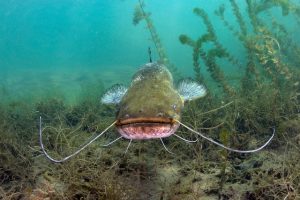
Cories are energetic little catfish that scurry about your aquarium, picking up scraps of food that have fallen to the substrate. Fun to observe, measuring between one and three inches. They can be considered a member of your aquarium’s cleaning crew.
However, there are some people who aren’t aware that cories have to stay in school. Cory fish’s stress levels are better controlled when kept in groups. When they are close to others like them, they are happy and healthy.
When feeding your cories, be sure to add a few sinking pellets to the tank to ensure that they have enough food.
2. Cherry barb
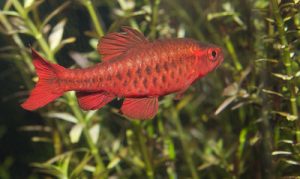
They are wonderful additions to the aquarium and are typically calm. Females are more subdued in color than males, who are bright red.
Additionally, they do not typically cluster together like neon ones do, but it is still crucial to have a sufficient number of them to reduce stress. It is also a good idea to pair two females with one male to avoid the female becoming stressed.
3. White minnows of clouds
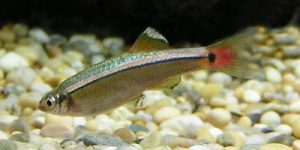
“White Cloud Mountain Minnow” by mira d’oubliette is licensed under CC BY-NC-ND 2.0
Cold-water fish include white cloud minnows. The minnows prefer a temperature that is roughly ten degrees cooler than the range where tropical fish thrive, which is between 75 and 80 degrees Fahrenheit.
Always keep them in a separate tank or with fish that can withstand cold temperatures, like corys, guppies, and zebra danios. When it comes to white minnows of clouds, it’s especially important to do some research before bringing the fish home.
4. Otocinclus Catfish

“Otocinclus” by AJC1 is licensed under CC BY-SA 2.0
To keep their aquariums clean, many new aquarium owners seek out fish that consume algae. They’re looking at Plecostomus, a suckerfish that always clings to the tank’s side.
The adult pleco can grow to a size of two feet, which makes it unsuitable for most aquariums. That is the only drawback.
Many owners of freshwater aquariums might fare better with a school of otocinclus catfish. Otos resemble miniature plecos and will cling to glass in a similar manner.
It’s best to keep them in groups and keep bigger fish away from them so they don’t get eaten. To ensure that your otos are receiving enough food, feed them algae wafers.
5. Neon Tetra

“Neon Tetra” by michelle.khuu is licensed under CC BY-NC 2.0
Neon is one of the most vibrant freshwater fish you can have in your aquarium. As adults, they are only about an inch long, so keep them away from big fish that might mistake them for a snack. They perform better in groups than on their own.
6. Harlequin Rasbora
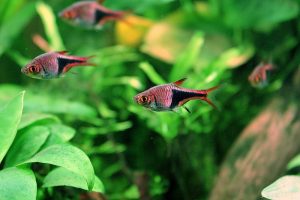
“File:01.Rasbora heteromorpha.jpg” by Juan R. Lascorz is licensed under CC BY-SA 3.0
Harlequin rasberries are calm and only reach a few inches in height. Their sides are a reddish-orange hue that matches the black markings on their tails. These fish typically thrive in a colony of six, and large schools are preferable.
These types are adaptable, making it a better option for newcomers. It’s best to keep them with similarly sized tankmates, as larger fish might consider them lunch. Alternatively, the harlequin rasbora is a colorful and simple fish to keep in your tank.
7. Tiger Barb
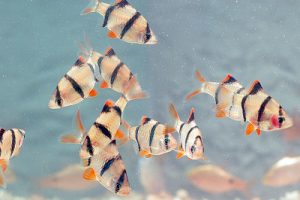
“Tiger Barb” by cb_agulto is licensed under CC BY-NC-ND 2.0
Tiger barbs are eye-catching fish with distinct black stripes. They have a reputation for being the last bullies and are aggressive.
They can be kept with other semi-aggressive fish, but you should group them together in groups of six or more to help keep them calm. Keep them away from fish with long, flowing fins.
8. Zebra Danio
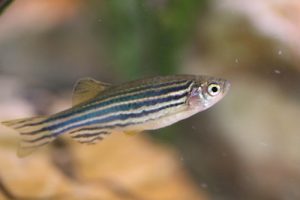
“zebra danio (stripe)” by bob_jenkins is licensed under CC BY 2.0
Since they are small and peaceful fish, it is best to keep them in peaceful community aquariums with smaller peaceful fish.
Keep in mind that large fish will consume small fish, so you should exercise caution whenever you introduce small fish like zebra danio.
9. Hatchet fish
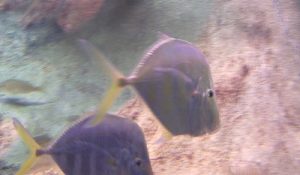
“Baltimore–October 19 2007–National Aquarium–Hatchet Fish” by Makuahine Pa’i Ki’i is licensed under CC BY 2.0
This is one of the most unique fish available, but it is not for everyone. Hatchet fish is a peaceful fish that lives in the upper part of the water column. However, they are easily startled and employ a unique defense mechanism to avoid predators. Jump out of the water!
In its natural environment, the jumping hatchet fish will return to the river. It might jump out of your tank in a home aquarium. If you plan to keep them, it is crucial that you make sure the entire aquarium is tightly covered.
10. Black Skirt tetra
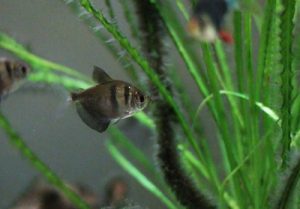
“Black Skirt Tetra” by Ken_Lord is licensed under CC BY-NC-SA 2.0
Larger than neon and a better choice if you have large fish in your tank. Their slender bodies, black stripes, and flowing black fins give them the appearance of sharp fish.
Give them at least a 15 gallon tank and keep them in groups of six or more. Like the majority of tetras, they thrive in aquariums with a lot of medium- and long-length vegetation.
Conclusion
The fish shared above will definitely be healthier, happier, colorful, and less stressed; they will be more colourful when they are in bigger numbers, colonies, or groups.
You can build a small school in your aquarium, and be filled with relaxation and entertainment that the species of school fishes will be much smaller, less prone to hiding in the shadows and can enhance the look and function of your entire tank and everything that goes together, is worth it!







